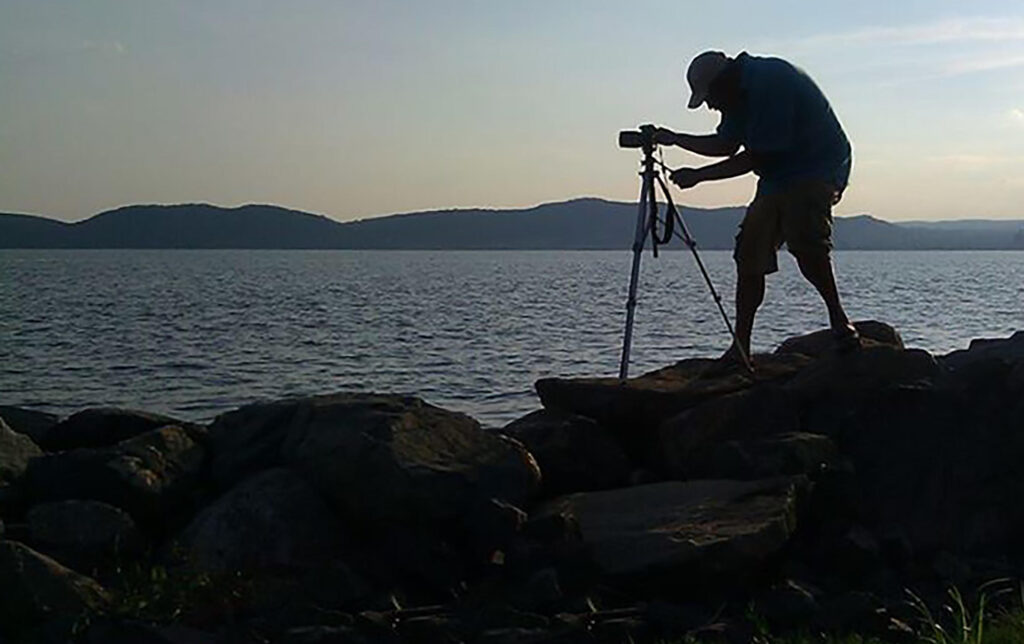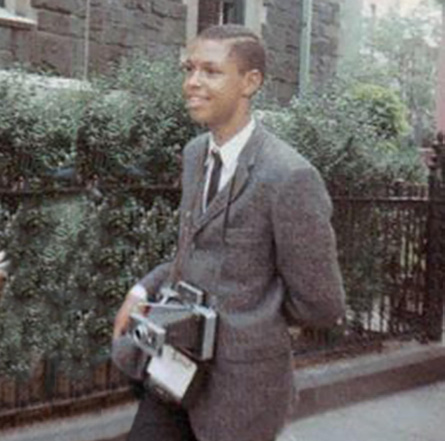
Growing up, I was fortunate to have parents who were avid readers. Various newspapers and magazines were always available in our household. Along with the radio, they were our main sources of news until my dad bought our first television and the evening news programs became another font of information. I always wanted more detailed information from news stories I read or saw on television. In the late 1950’s I saw my first documentary, The Golden Age of Comedy. It featured comedic scenes created and performed by the greatest comedians of that era. I became interested in documentary-style filmmaking which provided in-depth reporting but for too long I didn’t see documentaries that focused on my race and culture. Years later I was introduced to the work of documentarians, Stanley Nelson and Raoul Peck.
Ken Sargeant also follows the paths of Nelson and Peck who chronicle Black people, their various communities and tells their stories honestly. These are edited excerpts from our conversation conducted on Zoom.
Roger: Were you the kid who always carried around a Brownie camera taking pictures?
Ken: I started using a Polaroid at around 8 years old. Both my father and grandfather were photographers. Dad liked shooting jazz musicians. He went to Boys High School in Brooklyn, where he was a classmate and contemporary of Max Roach, the American jazz drummer. We had all kinds of cameras around the house.
Roger: Why did you transition from photography to filmmaking and specifically documentaries?
Ken: With documentaries you can visually explore experiences you may never see again. It’s a more powerful documentation. Important history happening now and in the past, can be brought to the public. You can’t fake the camera.

Roger: What attracts you to documenting people and their histories?
Ken: It’s important for people to understand that the origin of the Riverton Housing Complex was due to the segregation policies at Stuyvesant Town after World War II and how Levittown, Long Island was a symbol of racial segregation. It’s also important for people to understand the accomplishments of people like Henry Gourdine, the storyteller, boatbuilder, and fisherman. He was an advocate for the Hudson River and its fishing heritage. Another one of my subjects was Gertrude Jeannette who was the first female cab driver in New York City and an African American icon in the theater.
Roger: Your documentaries and oral history interviews focus on African American and African American communities. Do you feel as an African American filmmaker that is your responsibility?
Ken: Absolutely! I’m an elder now. I also feel that responsibility. It’s important that folks know about these people.
Roger: Several of your film projects focused on the Harlem community. Were you born and raised there?
Ken: I was born in Brooklyn. Grew up in Harlem and attended PS 197 elementary school. I had all Black teachers.
Roger: How has spending a major amount of your life in Harlem informed your work?
Ken: By proximity. Lived in Lenox Terrace. So many important people lived there and in other parts of Harlem. Bob Douglas, founder of the New York Renaissance basketball team; Ella Baker, civil rights leader; Ruth Brown, the singer and Leon Thomas, another singer. You realized you’re touched by greatness by proximity.
Roger: What photographers and filmmakers have inspired your work?
Ken: Initially I was doing commercial photography, retail catalogues and at one point shooting fine arts at Sotheby’s. Found it uninspiring. Then began getting inspired by Gordon Parks, of course, and one of his contemporaries, Cecil Layne who lived in Harlem. He was a riot. Always kept you laughing. He was a friend and neighbor. He worked for Crisis and Sepia magazines. Other Harlem based photographers who inspired me were Austin Hansen and Morgan and Marvin Smith.

Roger: You are a founding member of the Harlem Cultural Archives. Can you talk about the organization’s mission and how your filmmaking background has played a role in it?
Ken: We realized that the elders have powerful stories about past and changing Harlem and we wanted to visually capture that. An important institutional memory with no outsiders telling the story.
Roger: Two of your projects that are near and dear to me are “Down by the Riverside” and the American Negro Theater. What attracted you to those two subjects?
Ken: With “Down by the Riverside,” it was important to document the up south type of second-class accommodation and treatment that Black folks received in the Riverton Housing Complex as a result of Stuyvesant Town’s segregationist policy. Look who was around us when we grew up –Judge Bruce Wright; Constance Baker Motley the first female African American to serve as a federal judge; Rosetta LeNoire actress and producer; Billy Taylor jazz pianist, broadcaster and educator. Giants. They all lived in Riverton. My interest in the American Negro Theater was because of the founder, Frederick O’Neal who was my uncle. Met him when I was 9 years old and I saw nothing was being done to tell the theater’s history.
Roger: What fuels your dedication and commitment?
Ken: Being able to shape something going out in the world. Something to be proud of and celebrate. G&S
Facebook.com/HCAonline – FB: Sargeant





Leave a Comment